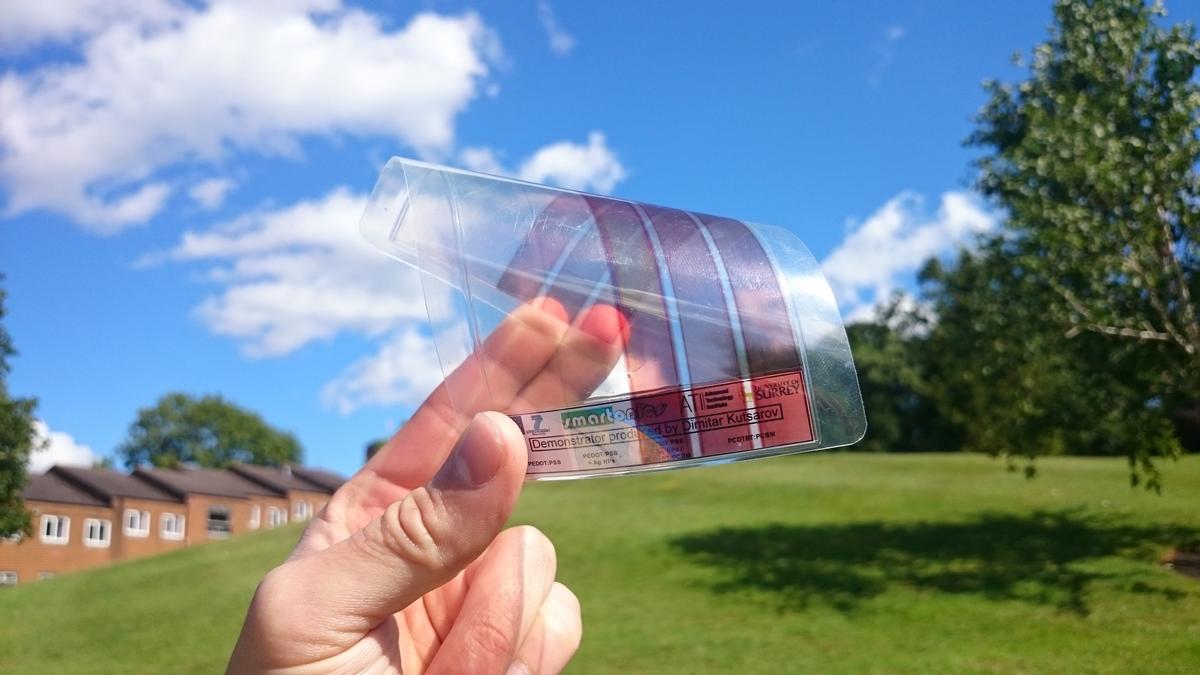see all jobs
Super-thin graphene 'wallpaper' will revolutionise our buildings, say scientists
British scientists have discovered how Graphene – the nanometre-thin material with remarkable electrical conductivity and mechanical strength – could be applied in buildings as ‘smart wallpaper’ to generate electricity from waste light or heat.
Inspired by the light-sensitive eyes of moths, scientists at the University of Surrey’s Advanced Technology Institute have used biomimicry to create ultra-thin graphene sheets that can effectively capture light for the first time.
The team found that by using a technique known as nanotexturing – which involves growing graphene around a textured metallic surface – light can be localised into the narrow spaces between the material’s surface, enhancing absorption by about 90 per cent.
“Nature has evolved simple yet powerful adaptations, from which we have taken inspiration in order to answer challenges of future technologies,” said Professor Ravi Silva, head of the institute. “Moths’ eyes have microscopic patterning that allows them to see in the dimmest conditions. These work by channelling light towards the middle of the eye, with the added benefit of eliminating reflections, which would otherwise alert predators of their location.
“We have used the same technique to make an amazingly thin, efficient, light-absorbent material by patterning graphene in a similar fashion.”
Silva revealed that solar cells coated with the graphene sheets would be able to harvest very dim light, generating electricity that could power “a numerous array of smart applications” – sensing and controlling different physical devices.
“The next step is to incorporate this material in a variety of existing and emerging technologies,” he said. “We are very excited about the potential to exploit this material in existing optical devices for performance enhancement, whilst looking towards new applications."
The institute is now seeking industry partners to develop this technology, and Silva called for “innovative companies” to make contact so the future applications of the technology can be developed.
In an exclusive interview with CLAD last month, the lead architect on the Millennium Dome project in London, Mike Davies, forecasted that nanotechnology could soon be used to form interactive skins and facades for buildings.
He said: “Windows and walls can be fitted with microchips to do everything from reading out data to transmitting energy. I can see a future of glass walls, display walls, energy collecting walls and radiators integrated into glass walls.”
Such a scenario was envisioned by CLAD editor Liz Terry at last year’s Global Wellness Summit in Mexico City, where she predicted a future of ‘living buildings’ which will “dim the lights or increase oxygen levels if you’re tired; make the air warmer if you’re cold; and scan your body, discover what nutrients you need and fabricate food for you if you’re hungry.”
In a report released last month by Samsung SmartThings, a team of researchers and scientists predicted that in the not-too-distant future, we will live in houses with sensors that can detect the presence of things like people, pets, smoke, humidity, lighting and moisture, and change the layouts and environments of our rooms accordingly.
More News
- News by sector (all)
- All news
- Fitness
- Personal trainer
- Sport
- Spa
- Swimming
- Hospitality
- Entertainment & Gaming
- Commercial Leisure
- Property
- Architecture
- Design
- Tourism
- Travel
- Attractions
- Theme & Water Parks
- Arts & Culture
- Heritage & Museums
- Parks & Countryside
- Sales & Marketing
- Public Sector
- Training
- People
- Executive
- Apprenticeships
- Suppliers
















































